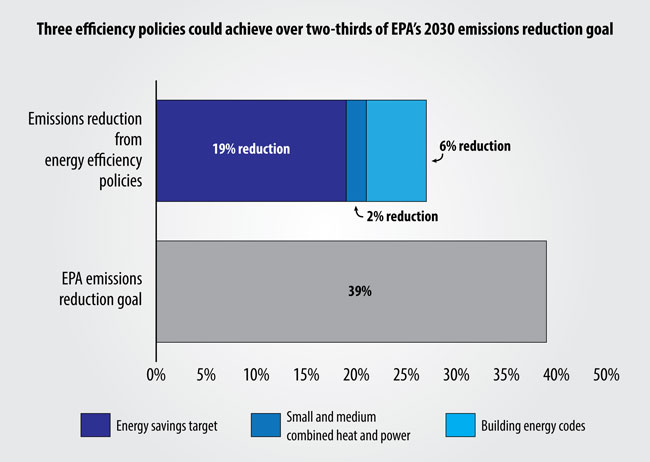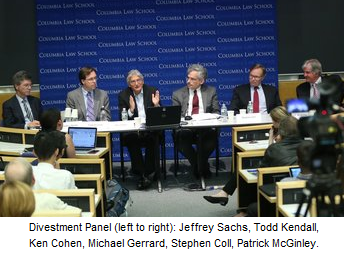On June 22, 2011, the New York State Legislature passed The Power NY Act of 2011 (A. 8510/S. 5844) (PNY Act).[1] Governor Cuomo is expected to sign it. The new law, once enacted, would do two very important things: (1) provide a mechanism to allow owners of residential and non-residential buildings to borrow money for energy efficiency projects, and pay it back over a period of years through their electric and gas bills; and (2) revive Article X of the Public Service Law, which creates an expedited, state-led program for permitting electric generating facilities while preempting local requirements. Additionally, the new law requires a study with respect to increasing solar photovoltaic generation in the state. This blog post will explain the first part of the bill–the on-bill recovery program. A blog post about the Article X provisions is available here.
“On-bill” financing is a mechanism that allows utility customers to pay back loans for energy efficiency upgrades through a charge on their monthly utility bill. This type of financing mechanism helps to overcome some common barriers to energy efficiency, including the up-front capital cost and the complexity of taking out a loan from a third-party lender that requires payment through a separate invoice. In addition, on-bill recovery allows the charge to stay with the property upon its sale or lease. This type of financing is also advantageous because it does not require a separate loan be taken out by a homeowner in the form of a mortgage, which could exclude persons who have poor credit. Although several municipalities and individual utilities have implemented limited on-bill financing programs, this is the first statewide program of its kind in the nation that allows residents, non-profits, and small businesses access to on-bill recovery for energy efficiency upgrades.
The new program will serve much the same function as the Property Assisted Clean Energy (PACE) program, which issued loans for energy efficiency and paid them back through charges on property taxes. PACE collapsed in 2010 because of objections from federal mortgage lenders who did not want their liens to be second priority behind PACE loans. PACE also required municipalities to adopt implementing legislation; on-bill financing does not.
I. Background: Green Jobs/Green New York Act
In 2009, the Legislature enacted the Green Jobs/Green New York Act (GJGNY Act).[2] The GJGNY Act directs the New York State Energy Research Development Authority (NYSERDA) to establish a revolving loan fund to finance “qualified energy efficiency services” for residential, small business, not-for-profit, and multi-family structures.[3] These services include modifications to a structure based on the recommendations of an energy audit approved by NYSERDA that will increase its energy efficiency.[4]
The GJGNY Act further directs NYSERDA to use $112 million that represented a portion of New York’s share of the proceeds from the sale of carbon allowances under the Regional Greenhouse Gas Initiative (RGGI) for the revolving loan fund.[5] RGGI is the first mandatory carbon dioxide mitigation trading system in the U.S. Its members include 10 Northeast and Mid-Atlantic states (though Governor Chris Christie is pulling New Jersey out of the program).[6] RGGI regulates carbon dioxide emissions from electric power plants that have a capacity of at least 25 megawatts. Emissions are capped at a certain level and regulated utilities must purchase carbon allowances via auction, the proceeds of which are then returned to the member states.[7] The GJGNY Act limited the amount of each loan as follows: loans are not to exceed $13,000 per applicant for approved qualified energy efficiency services for residential structures and $26,000 per applicant for approved qualified energy efficiency services for non-residential structures. For multi-family structures, loans are to be in amounts determined by NYSERDA, provided that it assures that a significant number of residential structures are included in the program.[8]
II. On-Bill Recovery Provisions of the PNY Act
The PNY Act makes no substantive changes to the GJGNY Act. Instead, it provides a mechanism that allows customers who take out loans pursuant to the GJGNY Act to repay these loans through a charge on their monthly utility bill.
The on-bill recovery program is located in Sections 2-11 of the PNY Act, the most important of which are Sections 5,8 and 11.
Section 5 amends the Public Service Law by adding a new Section 66-m. This section requires the Public Service Commission (PSC), within 45 days of the effective date of the Act, to commence a proceeding leading to the establishment of billing and collection services for on-bill charges for customers of gas and electric utilities with respect to payment of obligations for energy efficiency projects under the GJGNY Act. Covered utilities are directed to use existing billing systems, to the extent practical, to collect on-bill charges and use money available from NYSERDA for improvements that would streamline the collection of these charges. The program is initially limited to no more than 0.5% of the customers of a covered utility; NYSERDA can increase this limit as long as the PSC finds that the program is not causing significant harm to the utility or its ratepayers. (PNY Act § 5; Public Service Law (PSL) § 66-M(1)(A)-(1)(B)). This is an important provision, as it allows for NYSERDA (with PSC approval) to scale up the program without requiring additional action by the legislature.
Participation in the program for residential customers is limited to those individuals who hold primary ownership of the premises and hold primary meter account responsibility for all meters to which such on-site recovery charges will apply. (PNY Act § 5; PSL§ 66-M(2)(A)).
Unless fully satisfied prior to sale or transfer of the property, the on-bill charges for any services provided at a particular premises will survive changes in ownership, tenancy, or meter account responsibility. In addition, any arrears in on-bill charges at the time of account closure or meter transfer will remain the responsibility of the incurring customer, unless expressly assumed by a subsequent purchaser of the property. It will be NYSERDA’s responsibility, rather than the utility, to collect such arrears. (PNY Act § 5; PSL § 66-M(2)(D)-(2)(E)).
While the loan amounts for each applicant remain $13,000 for residential structures and $26,000 for non-residential structures, NYSERDA can increase these amounts to as much as $25,000 for residential structures and $50,000 for non-residential structures if the total cost of the energy efficiency measures will achieve a payback period of 15 years or less. Further, the monthly repayment amount cannot exceed 1/12 of the annual savings projected to result from the installation of energy efficiency measures financed by the program. (PNY Act § 8; Pub. Auth. L. § 1896(2)(b)(ii), (2)(e)(i)).
For each loan, NYSERDA is required to file a mortgage upon the property that received the loan, which is subordinate to any existing or future mortgage on the property. (PNY Act § 8; Pub. Auth. L. § 1896(4)(a)).
Any entity offering to sell real property that is subject to an on-bill charge pursuant to the GJGNY Act must provide a prospective purchaser with written notice prior to the acceptance of a written offer detailing the property’s obligations to the program, the amount of the original charge, the payment schedule, the remaining balance, and a description of the energy efficiency service performed on the property. (PNY Act § 11; Real Prop. L. 242(4)).
[1] The Assembly passed the bill by a vote of 120-14. The Senate passed the bill by a vote of 59-3.
[2] Pub. Auth. L. Art. 8, Tit. 9-A.
[3] Pub. Auth. L. § 1896.
[4] The term “structure” is defined in the GJGNY Act as a non-residential structure, a residential structure, or a multi-family structure. “Non-residential structure” is defined as a building that is used or occupied by a small business or not-for-profit corporation. “Small business” is defined as a business that is a resident of New York that employs 100 or less people. See Econ. Dev. Law § 131. “Residential structure” is defined as a residential building that has four or fewer dwelling units. “Multi-family structure” is defined as a residential building with five or more dwelling units.
[5] Pub. Auth. L. § 1896.
[6] These states include Connecticut, Delaware, Maine, Maryland, Massachusetts, New Hampshire, New York, Rhode Island, Vermont, and, until recently, New Jersey.
[7] Additional information about RGGI is available at https://www.rggi.org.
[8] Pub. Auth. L. § 1896(2)(b)(ii).



